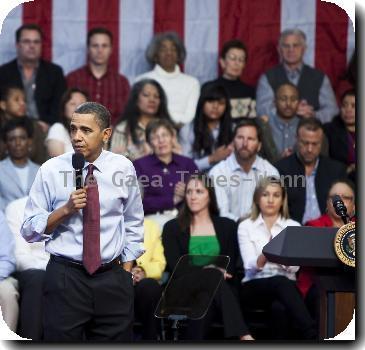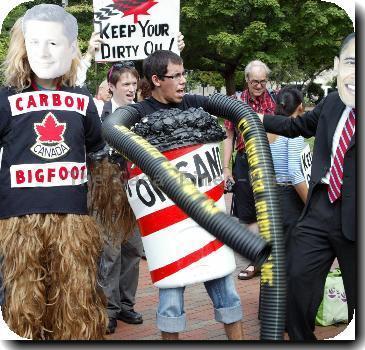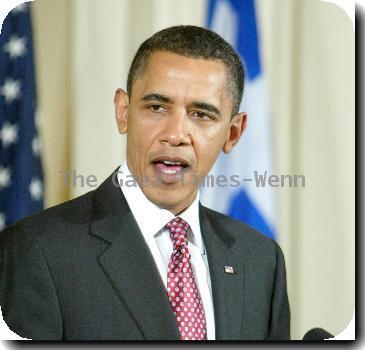Some oil spill events from Friday, June 4, 2010
By APFriday, June 4, 2010
Some oil spill events from Friday, June 4, 2010
A summary of events on Friday, June 4, Day 45 of the Gulf of Mexico oil spill that began with the April 20 explosion and fire on the drilling rig Deepwater Horizon, owned by Transocean Ltd. and leased by BP PLC, which is in charge of cleanup and containment. The blast killed 11 workers. Since then, oil has been pouring into the Gulf from a blown-out undersea well.
CAP
BP reported some oil was flowing up a pipe Friday from a cap it wrestled onto its broken Gulf of Mexico well. But crude still spewed and it was unclear how much could be captured in the latest bid to tame the nation’s worst oil spill. The funnel-like lid is designed to channel oil to a surface tanker. The government’s point man for the crisis, Coast Guard Adm. Thad Allen, said it was too early to tell if it will work — and it will be, at best, a temporary and partial fix.
OBAMA
On his third personal trek to the Gulf disaster, President Barack Obama said he sees some progress in fighting the enormous oil spill but it’s “way too early to be optimistic” about BP’s latest control effort. Aiming to demonstrate command and personal engagement, Obama criticized the British oil giant for spending money on advertising and paying dividends to shareholders in the midst of crisis. “What I don’t want to hear is when they’re spending that kind of money on their shareholders that they’re nickeling and diming” local businesses and workers, Obama said.
MILITARY
U.S. Defense Secretary Robert Gates rejects a more forceful role for the military in plugging the Gulf of Mexico oil leak. Gates says the deep-water disaster is beyond the military’s expertise. Oil company BP is using its own equipment to try to stop the leak — equipment the U.S. military does not have.
IXTOC
Parallels between the Ixtoc well disaster and the current BP oil spill offer sobering lessons. The 1979 spill began with a burst of gas through a well being drilled in the Gulf of Mexico. Workers scrambled to close safety valves. But within moments, the platform caught fire and collapsed. Numerous attempts to stanch the spill failed. Three decades later, it remains the world’s worst peacetime oil spill, at 140 million gallons. Mexico’s state-owned oil company, Pemex, tried methods similar to those that BP has attempted at its Deepwater Horizon rig. But it took 10 months to stop the leak.
EARLY WARNING
Newly disclosed internal Coast Guard documents from the day after the explosion aboard the Deepwater Horizon rig indicated that U.S. officials were warning of a leak of 336,000 gallons per day of crude from the well in the event of a complete blowout. The volume turned out to be much closer to that figure than the 42,000 gallons per day that BP first estimated. Weeks later that was revised to 210,000 gallons. Now, an estimated 500,000 to 1 million gallons of crude is believed to be leaking daily.
FLORIDA
Gooey blobs of oil tar are washing ashore in growing numbers on the white-sand beaches of the Florida Panhandle. County emergency officials reported that spotters who had been seeing a few tar balls in recent days found a substantially larger number.
MORE BIRDS
The damage to the environment was chilling on East Grand Terre Island along the Louisiana coast, where workers found birds coated in thick, black goo. Images shot by an Associated Press photographer show brown pelicans drenched in thick oil, struggling and flailing in the surf. Authorities said 60 birds, including 41 pelicans, were being rescued. That more than doubled the number of birds at the rescue center next to Fort Jackson.
COMMUNITY MEETING
In oil-soaked Grand Isle, Jason French might as well have painted a bulls-eye on his back. His mission was to be BP’s representative at a meeting for 50 or so residents who had gathered at a church to vent. French said everyone is angry and frustrated, and BP is working hard to fix things. Residents weren’t buying it. “Sorry doesn’t pay the bills,” said Susan Felio Price, a longtime resident.
SAND BERMS
BP is establishing a $360 million escrow account to fund a project to build six sand berms that Louisiana Gov. Bobby Jindal hopes will protect the state’s wetlands from the growing Gulf of Mexico slick. Hours after Jindal urged the British oil giant to start doling out the payments immediately, the company said it had approved the accounts. The federal government on Wednesday ordered BP to pay for the project, which Jindal and other state officials have long sought.
OIL PLUMES
Scientists with the University of South Florida say lab tests have confirmed that oil has accumulated in at least two extensive plumes deep underwater. The researchers said in Baton Rouge that tests confirmed their initial findings that were based on field instruments. BP PLC has said more research is needed. The researchers say the extensive layers of oil are sitting far beneath the surface miles from the site of the Deepwater Horizon explosion.
CHEMICAL DISPERSANTS
A federal panel of about 50 experts is recommending the continued use of chemical dispersants to break up the oil gushing in the Gulf of Mexico, despite its harm to plankton, larvae and fish. Panel member Ron Tjeerdema said they decided the animals harmed by the chemicals underwater had a better chance of rebounding quickly than birds and mammals on the shoreline. Tjeerdema chairs the Department of Environmental Toxicology at the University of California, Davis. Officials have released nearly 1.8 million gallons of chemicals on and in the water since the blowout.
Tags: Accidents, Barack Obama, Coastlines And Beaches, Energy, Environmental Concerns, Florida, Louisiana, North America, United States



